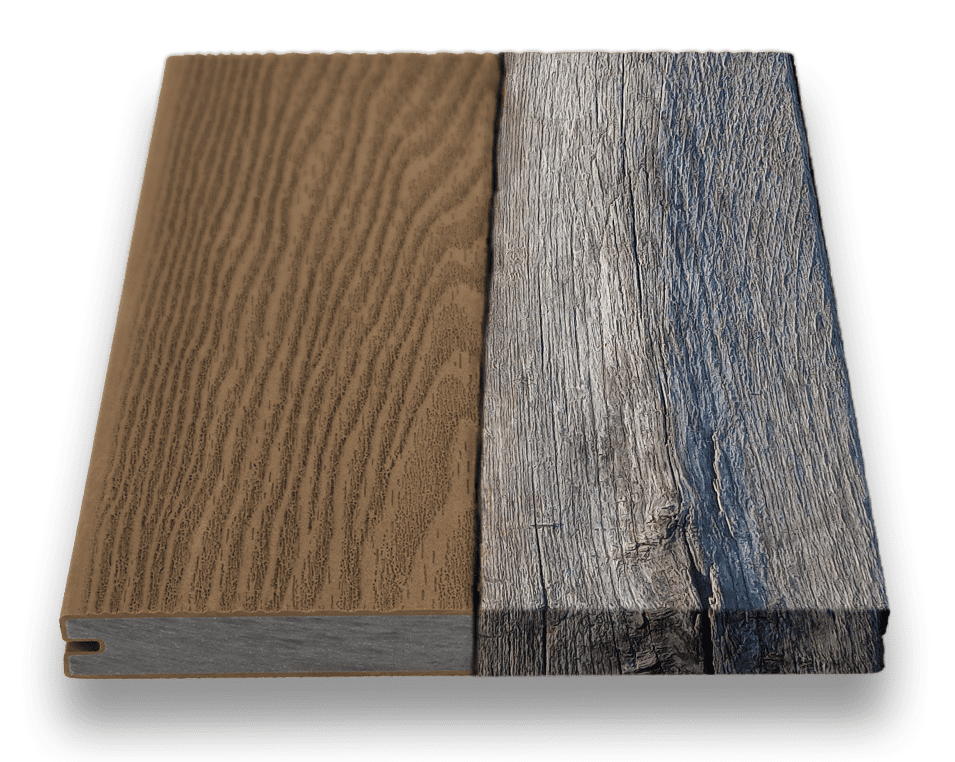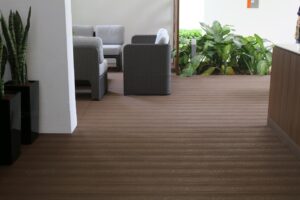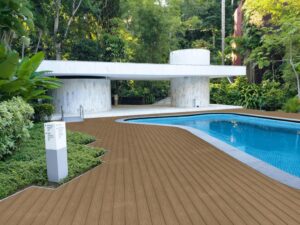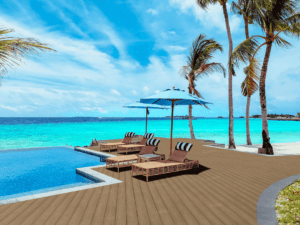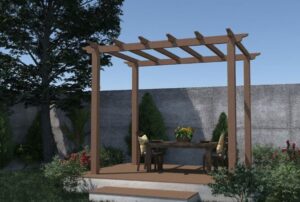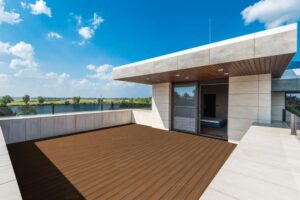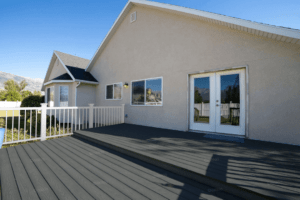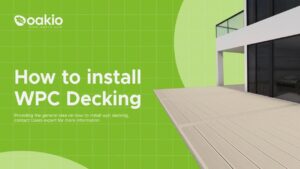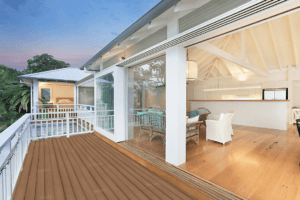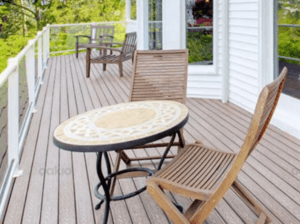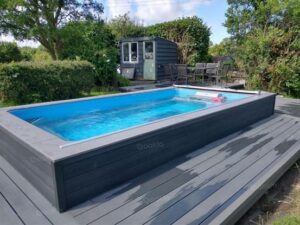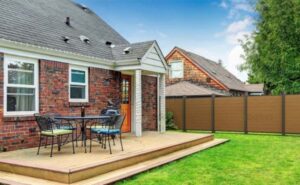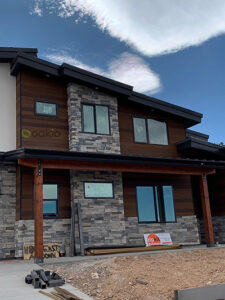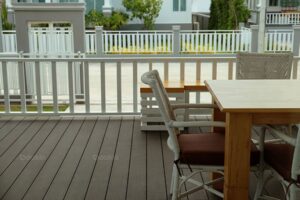What is the Distinction Between WPC Decking and Real Wood Deck?
WPC decking is a new type of building material that has been improved and is very different from traditional decking. Although it has the word “deck” in its name, it is essentially different from the deck we know during ordinary decoration. It is also more environmentally friendly. It does not consume many resources to produce it, and it is a complete high-quality material. When it comes to creating the perfect outdoor living space, the choice of decking material plays a pivotal role. Homeowners often find themselves weighing the benefits of WPC (Wood Plastic Composite) decking against traditional real wood decks. Both options offer unique advantages, but understanding their distinctions is key to making an informed decision that aligns with your lifestyle, aesthetic preferences, and maintenance willingness.
Overview of Decking Materials
WPC Decking is a modern composite material made from a blend of wood fibers, plastics, and various additives. It’s designed to offer the look of real wood without the high maintenance requirements.
Real Wood Decking is the traditional choice, crafted from natural wood such as cedar, redwood, or pressure-treated pine. It’s favored for its natural beauty and classic appeal.

Durability and Lifespan Distinction Between WPC Decking and Real Wood Deck
WPC decking stands out for its remarkable durability and long lifespan. Resistant to rot, pests, and weathering, WPC decks can last for decades with minimal care. In contrast, real wood decks require regular maintenance to combat the elements and are generally more susceptible to wear and tear, lasting around 10 to 30 years depending on the wood type and care given.
Maintenance Requirements (WPC Decking VS Real Wood Deck)
The maintenance of WPC decking is relatively low. Simple cleaning with soap and water is typically enough to keep it looking fresh. Real wood decks, however, demand more attention—annual staining, sealing, and inspections to replace warped or rotting boards are necessary to preserve their appearance and longevity.
Aesthetic and Design Options (WPC Decking VS Real Wood Deck)
WPC decking offers a wide range of colors and finishes, mimicking various types of wood and even other materials. It’s a versatile choice for homeowners looking for specific color schemes or minimal upkeep. Real wood, with its natural grains and textures, provides a warm, authentic look but is limited to the colors and patterns nature offers.
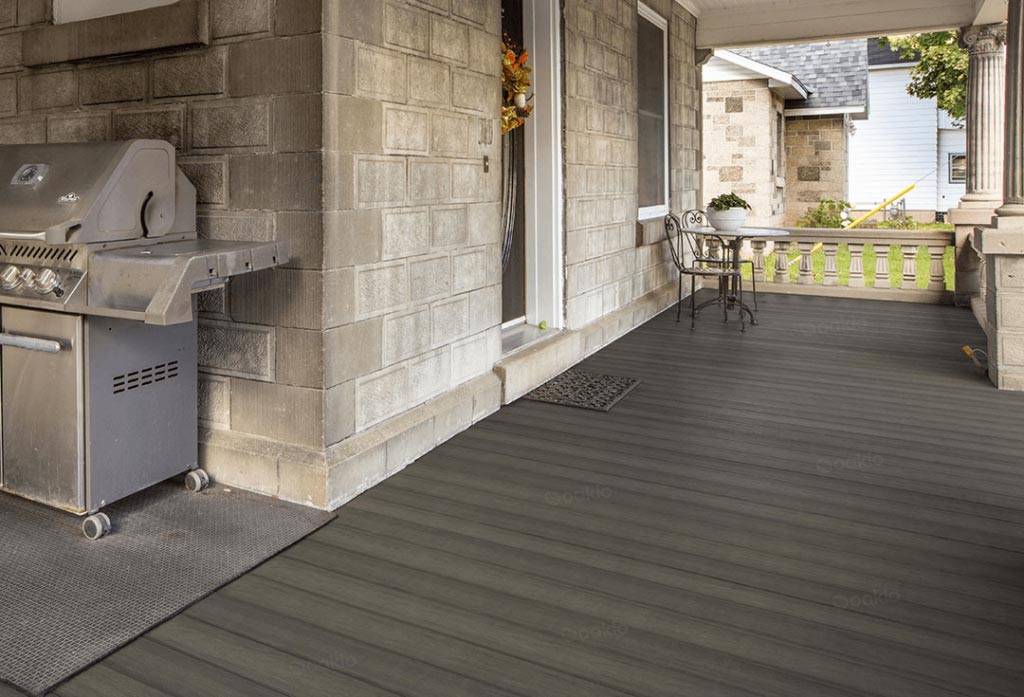
Environmental Impact (WPC Decking VS Real Wood Deck)
The environmental considerations of both materials vary. WPC decking, made from recycled materials, is seen as an eco-friendly option that reduces waste. Real wood is renewable and biodegradable but requires cutting down trees, and certain types of wood may be sourced from non-sustainable forests.
WPC Decking and Real Wood Deck Cost Comparison
Initially, WPC decking tends to be more expensive than real wood due to its manufacturing process and longevity. However, considering maintenance costs over time, WPC can be a more cost-effective option in the long run. Real wood, while cheaper upfront, incurs ongoing costs for upkeep and replacement.
WPC Decking and Real Wood Deck Installation Considerations
Installation of WPC decking is generally straightforward, with uniform pieces that easily click into place. Real wood decking requires more skill for installation, considering the variability of wood pieces and the need for sealing and treatment before or after installation.
Conclusion
1. WPC decking has unlimited potential
A plastic wood deck has great advantages in any aspect. As a new type of plastic wood composite material, it is a perfect combination of wood and plastic. But its benefits far surpass these two. It can be recycled and reused, but its use performance advantages are also very prominent. It is resistant to pressure and moisture. It is also waterproof and fireproof. It is not easily deformed with long service life. In addition, a plastic wood deck can also absorb noise, bringing people a quiet environment. The procedure of installing WPC decking is also very simple, without complicated construction, which can save much money. Its application range is also extensive, and it can play its value in various occasions where decking is needed.
With the advancing of the times, environmental protection is bound to become the mainstream of society, and the current pollution phenomenon is getting more and more serious. More energy-saving products need to be on the stage to provide better help for humankind. Therefore, the practical WPC deck will have unlimited development potential.
2. The difference between WPC decking and solid wood decking
Comparison of the raw materials of plastic wood deck and solid wood decking: The raw materials of wood plastic decking are mainly wood flour and plastic, new green environmental protection profiles extruded at high temperature. Solid wood decking is a ground decoration material formed by drying and processing natural wood, which is non-toxic.
Comparison of the physical properties of the wood plastic deck and solid wood deck: The surface of the WPC decking has a different tooth surface, which increases the friction coefficient and is non-slip. Therefore, the plastic wood deck is used for balcony, kitchen, and bathroom in home decoration. The surface of the solid wood deck will be polished. The cover is smooth and easy to slip. It is used indoors and in living rooms.
Comparison of post-maintenance between plastic wood deck and solid wood decking: WPC decking has the characteristics of waterproof, anti-cracking, and moisture-proof. Generally, it does not need maintenance and only deals with dust. The solid wood deck is not waterproof and needs to be wiped with a dry cloth and ventilated at the same time.
Choosing between WPC decking and real wood involves considering factors like durability, maintenance, aesthetic preferences, environmental impact, cost, and installation. WPC offers a low-maintenance, durable, and eco-friendly option, while real wood provides a classic, natural look but requires more upkeep. Your decision should align with your lifestyle needs and long-term outdoor living aspirations.
Have you installed a deck recently or are considering one? Share your thoughts and experiences in the comments below, or reach out to a professional for advice tailored to your specific situation. The right choice can transform your outdoor space into a beautiful, functional extension of your home.
Trending Reading
What Are the Differences Between the WPC Board and PVC Board?
[2024 Update] How Long Does WPC Decking Last?
